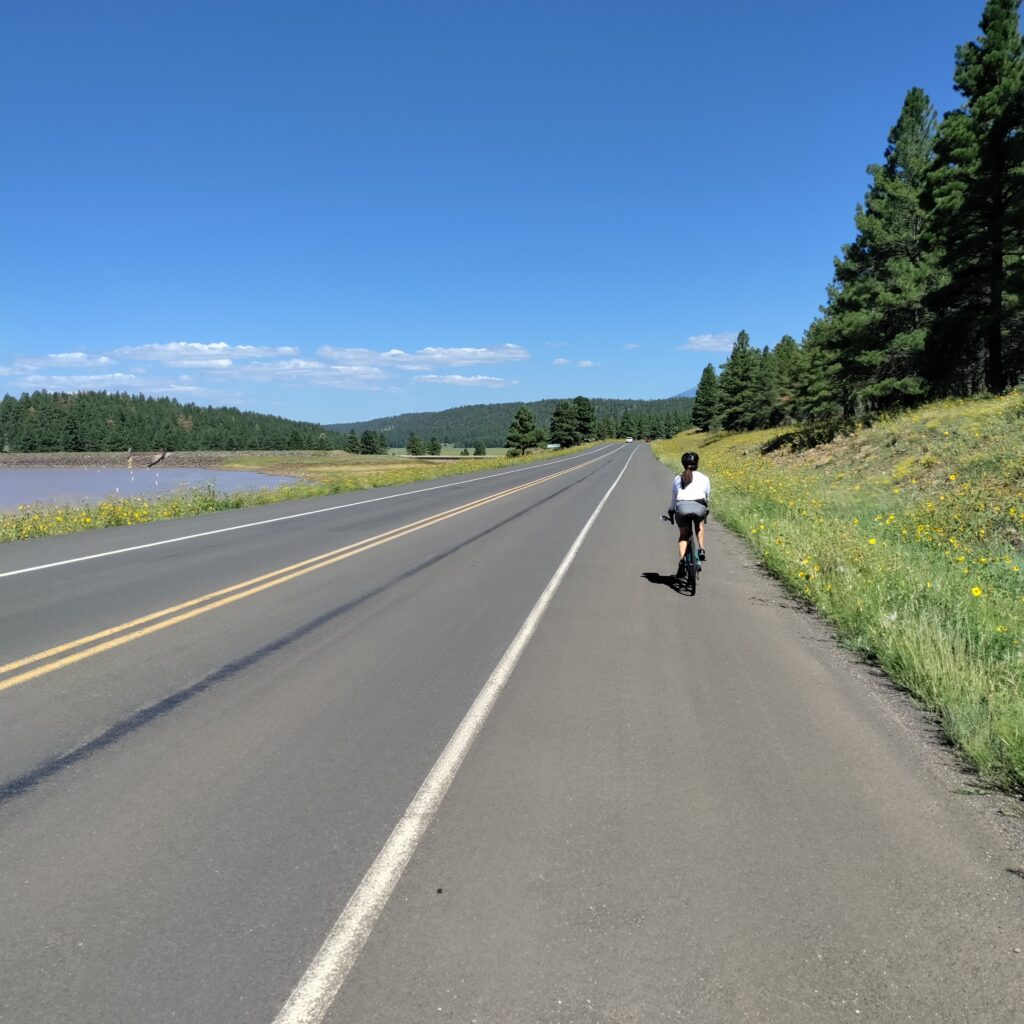Cycle for Science

WHO: I am looking for folks that ride their bike on Lake Mary Road, Flagstaff Arizona and record their mileage with a GPS device to participate in a project tracking tarantulas. An image of the specific tarantula is at the bottom of the page, and here is a short video of a male hairy red tarantula, also known as the Grand Canyon black tarantula.
HOW and WHAT: The GPS device can be a smart watch, bike computer, smart phone, or basically anything that tracks your mileage using GPS. When you are biking on Lake Mary whenever you see a tarantula mark the location on your device. You do not even need to stop. Depending on your device you can create a “mark” , waypoint, or in my case I just hit the lap button on my Garmin Forerunner 935. My watch automatically records laps at 5 mi intervals, thus if my lap is less than 5 miles I know that the lap number indicates a tarantula location. Or turn off the automatic lap function and have every lap indicate a tarantula. You can also just use your phone and mark the location with a variety of apps.
Once you are done with your ride please send me (David.Rogowski@nau.edu) your GPS file in a kml formatted file. A kml file is a Google Earth formatted file, it contains both laps/waypoints as well as route information, time and distance. Or alternatively you can send me the latitude and longitude of each tarantula seen and time (plus start/end point and times). Even if you do not see any tarantulas please send me a file, it is still data and important for determining when and why tarantulas are present or not present. Tarantula sightings might be related to time of day or various weather factors, such as temperature. Here is a short video on how to export a file from Garmin Connect.
WHY am I doing this? This project combines two of my favorite things, bicycling and science! I am an avid bicyclist and regularly ride Lake Mary Road since I have moved to Flagstaff in 2013. Every fall I have noticed tarantulas crossing the road. These are male hairy red tarantulas Aphonopelma marxi out looking for love. I got interested in what triggers their migration, where are they most common (habitat), and whether I can track population numbers by counting the numbers of tarantulas. I started a pilot project in fall of 2020 to see if it could be done. It can! (Here is a map of tarantula locations from fall 2020-2022.) However, I can not do it all myself. I need some help. That is where you come in. Each ride is considered a transect, and your GPS tracks the distance, time of your transect (bike ride) and the location (waypoint/lap) of each tarantula and time of day they were seen. The more rides you do, the more data we have and the better the inferences we can make about this little studied species.
What if I don’t see any tarantulas? They usually start showing up around the end of September or the first week of October. That is one of the questions I am trying to answer. When do they start migrating, and what triggers that movement? So, you may not see any on your bike ride, but that is OK, that data is useful, to help answer when they are present and absent. So, send in your ride data, even if you did not see any tarantulas.
Results Update – I presented some of the results of the last three years of data on a separate page entitled: Tarantula research results. I presented these preliminary results at a conference in February 2023.
Phase Two: tracking tarantulas!
I will continue Phase 1 of this study – the Cycle for Science portion outlined above as long as I am able and volunteers are willing. However this coming fall (2024) I want to expand the program. I am referring to it as Phase 2. I applied for a small grant to purchase some radio telemetry equipment. I hope to put radio tags on 7-10 male tarantulas and track them over a period of time to determine 1) their home range, the size of the area that they wander, if they have one, 2) is there a direction to their movements? and 3) how far do they move within a day?
I will be looking for volunteers to help out with this part of the study, even if I do not get the grant.
UPDATE – I did not get the grant 🙁 So, we will not be radio tracking tarantulas. We will have to track individual tarantulas using a handheld GPS. Let me know if wandering in the fields and forests looking for radio tagged tarantulas or following a tarantulas for 4-6 hours sounds like something you would be interested in doing this fall. It is surprisingly hard – male tarantulas explore every little nook and cranny, and if you look away for a few seconds, it is easy to lose track of the tarantula.

To learn more about this species check out Michael Jacobi’s video on YouTube below:
updated 3 September 2025